Our history
“All companies have a story, but not all are steeped in History. They are born and grow, evolve with the times through technological revolutions, survive by transforming, or disappear, replaced by others better adapted. Rare are those that have preserved their original production while modernizing their tools to the highest degree. The Fabric Printing Manufacture is one of them.”
Liliane Borin
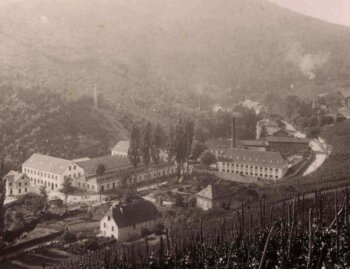
1756 : The origins
It all began in 1756, when Philippe Stephan, a wealthy industrialist from Mulhouse, founded the first weaving and printing factory. This is where the textile adventure that would span centuries was born.
1839 : The Andrinople red era
In 1839, Charles-Emile Steiner took over the dyeing works and introduced the famous Andrinople red, imported from England. This unique color marked the beginning of the Manufacture’s renown.
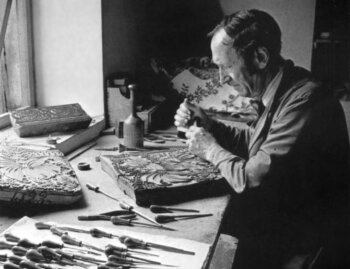
1843 : Block printing
In 1843, the Manufacture perfected block printing: each motif, hand-carved on wooden blocks, is applied color by color. This artisanal process gives the fabrics unmatched brilliance and finesse, making each piece truly unique.
1860 : Modernization of weaving
The acquisition of a loom in 1860 marked a key stage in the company’s evolution, blending tradition and innovation.
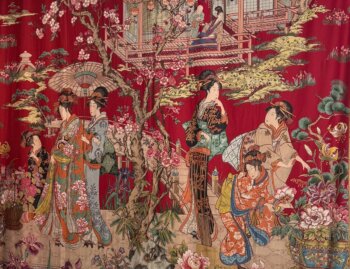
1900 : International recognition
At the Paris World Exhibition, a Japanese panel featuring 36 colors and 840 blocks won first prize, placing Alsace in competition with Japan. The Manufacture thus gained international fame thanks to its exceptional know-how.
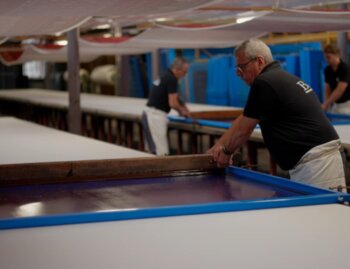
1960 : The Lyon-style flat screen
With the industrial transformation of textile printing, the Lyon-style flat screen technique emerged. The MIE then expanded into table and home linens, opening a new field of activity.
1980-1989 : A new beginning
Mr. Arné Borin took over the company with the support of the staff and gave it a fresh start under the name La Manufacture d’Impression sur Étoffes.
Jean-Michel Borin joined the company and launched the Beauvillé brand, diversifying into table linens while continuing the production of upholstery fabrics.
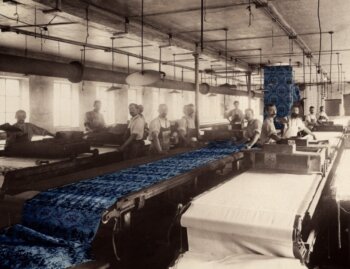
1990: The Topkapi motif
The creation of the Topkapi model, inspired by travels and Oriental influences.
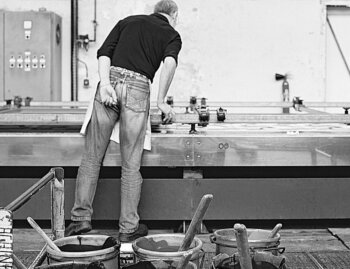
1995 : Mechanical innovation
Acquisition of the first mechanical flat-screen printing machine, modernizing the process while maintaining artisanal standards.
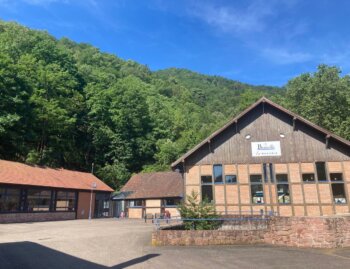
1998 : Opening of the shop
Creation of the shop next to the factory in memory of Arné Borin.
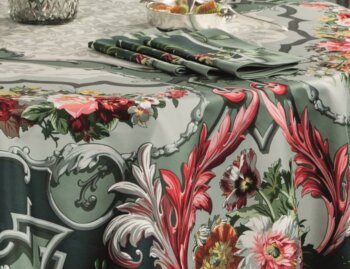
2000 : The Millennium tablecloth
Creation of the Millennium tablecloth, also called the Arné tablecloth, in tribute to Arné Borin.
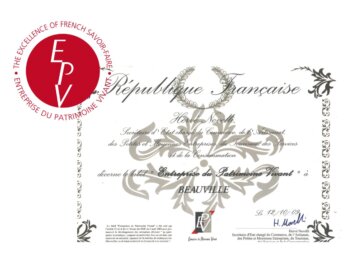
2009 : State recognition
The Manufacture received the “Entreprise du Patrimoine Vivant” label, the only national distinction recognizing exceptional craftsmanship.
2012 : Modernization of the workshops
Major investments in new machinery to combine precision, reliability, and performance while preserving the unique character of artisanal printing.
2018-2020 : Evolution of CSR commitments
Between 2018 and 2020, the Manufacture adopted responsible practices:
-
Water management
-
LED lighting
-
Organic cotton…
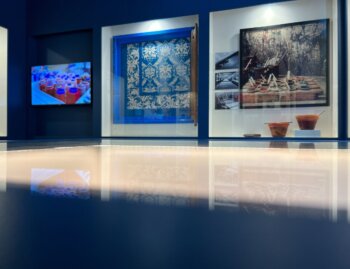
2023 : Opening of the museum
Inauguration of the Museum of the Fabric Printing Manufacture, celebrating the company’s history, innovation, and unique artisanal know-how.



